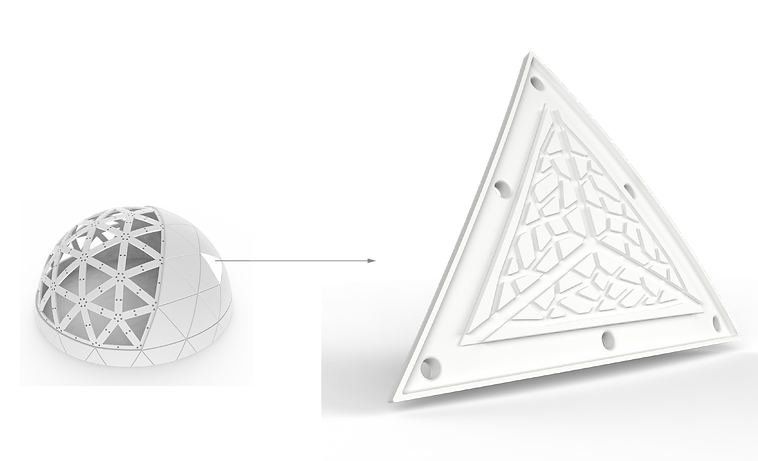

POR is a radiation shield made from specialized plastic that is created through the repurposing of human waste.
14 weeks personal project
Prototyping, System Design, Life Cycle Analysis (LCA)

As we start to explore the possibility of sending humans to the Moon for extended missions, such as a six-month Lunar Outpost Mission, I recognize that our current methods of managing human waste only support brief visits to deep space.
POR is a construction material for lunar habitats that tackles two significant challenges in human space exploration: radiation and waste management.
Design Challenge
Design a lunar-based system of product/service for the year 2030.
The class was tasked to design a system of products for lunar missions and use Life Cycle Assessment (LCA) to prove the new product has a lower environmental impact. I focused on human waste management for the early phase of long-term lunar missions.
Research Context
Space Missions:
The Challenge of Human Waste
Currently, we depend on Earth to resupply materials and to incinerate human waste; however, as we inhabit the Moon and other locations in space, this will neither be possible nor sustainable.

Life Cycle Assessment (LCA)
Knowledge Goal: Analyzing the Waste Management System (WMS) and identifying the causes of the environmental impact.
User Journey
Knowledge Goal: Understanding the pain points/process of using and maintaining the waste system.


Key Problem
This Linear System is Throwing Potential Resource Away With a Heavy Use of Energy and Materials.

Opportunities
1. A Technology to Process Human Waste for In-Situ Resource Utilization (ISRU)
One potential waste-processing advancement that I incorporated is the Torrefaction Processing Unit (TPU). This new method allows solid human waste to convert into a stable char product, which has multiple potential uses, such as generating plastic. (Read more about this LRR technology at NASA)
2. Human Survival for Lunar Outpost Mission: Mitigate Radiation
Seeing the potential to shield against radiation from this new human waste converted plastic, this project proposes a way to turn a never-ending source of waste into a sustainable source of material for use in shielding radiation and for lunar habitat construction.
Exploring possible applications:

A roadmap to develop ideas
Design
A Water Wall Structure Inspired by Plant Leaves
Water and plastic materials mitigate radiation effectively. Inspired by the vein structures of plant leaves, the POR design uses this new plastic from human waste to form a vascular system for the habitat.
The POR Habitat Structure
The habitat specs are defined by the requirements for lunar outpost crew missions, using the studies on radiation protection and structural design for lunar habitats.

Habitat spec:
_Four crew members, rotate every six months
_Habitat volume: > 480 m3
_Water wall thickness > 0.25 m
Design Consideration:
Modular system.
Radiation:
Provide radiation protection to mitigate the dose <50 rem/yr.
Material:
_Repurposed plastic, assume it could become printable material.
_Water, which will have dual usage in the future.
Structure:
_Rigid over inflatable for long-term missions
_Spherical/ Cylindrical form to endure even radiation dose and avoid pressure tension.
Research: Structural Design of a Lunar Habitat
The POR System
This new closed-loop system converts human waste into construction material for the lunar habitat.

The POR Unit
Inspired by leaves, the venation structure allows water to distribute evenly and provide mechanical resilience.

The cross-section of a POR unit
Prototyping







